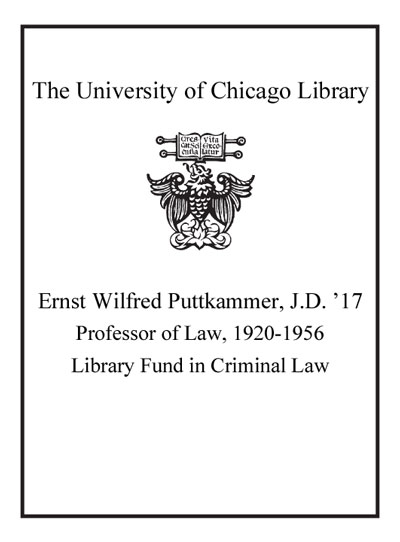The International Criminal Court : recommendations on policy and practice : financing, victims, judges, and immunities /
Saved in:
| Imprint: | Ardsley, NY : Transnational Publishers, c2003. |
|---|---|
| Description: | xxiii, 212 p. : ill. ; 23 cm. |
| Language: | English |
| Subject: | |
| Format: | Print Book |
| URL for this record: | http://pi.lib.uchicago.edu/1001/cat/bib/4866875 |
Table of Contents:
- Contributors
- Note by the Editor
- Acknowledgments
- Foreword
- Preface
- Chapter 1. The Victims and Witnesses Unit (article 43.6 of the Rome Statute)
- Postscript
- 1. Introduction
- 2. Financing, Staffing and Structure
- 2.1. Budget and Financing
- 2.2. Staffing
- 2.3. Sub-Units
- 3. VWU Standing and Relationship With the Office of the Prosecutor
- 4. Beneficiaries
- 4.1. Witnesses
- 4.2. Others Who Are at Risk on Account of Testimony Given by Such Witnesses
- 4.3. Victims
- 5. The Victims and Witnesses Unit: Protective and Security Functions
- 5.1. Measures during the Investigation and Pre-Trial Phase
- 5.2. Measures during the Trial
- 5.3. Measures after the Trial
- 6. The Victims and Witnesses Unit: Support Functions
- 6.1. Statutory Provision
- 6.2. Assistance and Support Services
- 6.2.1. Administrative Support
- 6.2.2. Travel Support
- 6.2.3. Support during the Trial
- 6.2.4. Medical and Psychological Support
- 7. Conclusions
- Tables 1-19
- Chapter 2. The Financing of the International Criminal Court
- Postscript
- 1. Introduction
- 2. Financial Framework
- 2.1. Basic Elements
- 2.2. Financial Rules and Regulations
- 2.3. Relationship of the Court with the United Nations
- 3. Funds of the Court and of the Assembly of States Parties
- 3.1. Assessed Contributions by States Parties
- 3.1.1. The UN Scale of Assessment
- 3.1.2. A Hypothetical Scale of Assessment of the Court
- 3.1.3. Possible Adjustments to the Scale of Assessment of the Court
- 3.1.4. The Power to Assess Contributions
- 3.1.5. The Duty to Pay Assessed Contributions
- 3.1.6. Other Costs Borne by States
- 3.2. Funds Provided by the United Nations
- 3.2.1. The UN Could Provide the Initial Funding of the Assembly of States Parties and the Court
- 3.2.2. The UN Could Pay for the Costs of the Assembly of States Parties
- 3.2.3. The Relationship between UN Contributions and Assessed Contributions
- 3.3. Voluntary Contributions (Article 116)
- 3.3.1. Voluntary Contributions as Distinct from and Additional to the Court's Funds
- 3.3.2. Possible Contributors under Article 116
- 3.3.3. Nature of Contributions
- 3.3.4. Limitations to Voluntary Contributions
- 3.3.5. Gratis Personnel
- 3.4. Other Resources
- 4. The Budget of the Court
- 4.1. The Nature of the Budget
- 4.1.1. The Jurisdiction of the Court
- 4.1.2. The Nature of the Court as an International Criminal Court
- 4.2. Expenditure
- 4.2.1. Stand By Scenario
- 4.2.2. Operating Scenario
- 4.3. Budget Procedure
- 4.3.1. Budget Cycle
- 4.3.2. Preparation of the Budget and Submission to the Assembly
- 4.3.3. The Adoption of the Budget
- 4.4. Oversight Mechanisms
- 5. Conclusions
- Tables 1-5
- Chapter 3. The Trust Fund for Victims (article 79 of the Rome Statute)
- Postscript
- 1. Introduction
- 2. The Trust Fund vis-a-vis the Rome Statute
- 2.1. The Trust Fund and the Court
- 2.2. The Trust Fund and the Assembly of States Parties
- 3. Beneficiaries
- 3.1. Victims and the Families of Such Victims
- 3.2. Crimes within the jurisdiction of the Court
- 4. Contributions
- 4.1. Fines and Forfeiture (art. 79.2)
- 4.2. Reparations (art. 75.2)
- 4.3. Voluntary Contributions
- 4.4. Contributions to the Trust Fund from the Court's Resources
- 5. Utilization
- 5.1. Interim Relief
- 5.2. Legal Assistance
- 5.3. Humanitarian Assistance by Way of Collective Projects
- 6. Administration of the Trust Fund
- 6.1. Administration by the Court or by the Assembly of States Parties
- 6.2. Administration by the UN Secretariat
- 6.3. Administration by the UNDP
- 6.4. Advisory Board
- 7. Conclusions
- Tables 1-4
- Chapter 4. Nomination and Election of Judges
- Postscript
- 1. Introduction
- 2. Judges--Presidency and Chambers
- 3. Qualifications of Judges
- 3.1. Qualification of the Individual Judge
- 3.1.1. National of a State Party
- 3.1.2. Moral Character, Impartiality and Integrity
- 3.1.3. Qualifications Required in Judges' Home States for Appointment to the Highest Judicial Offices
- 3.1.4. Competence in Criminal Law and Procedure or Competence in Relevant Areas of International Law
- 3.2. Balanced Representation Within the Membership of the Court
- 3.2.1. The Representation of the Principal Legal Systems of the World
- 3.2.2. Equitable Geographical Representation
- 3.2.3. A Fair Representation of Female and Male Judges
- 3.2.4. Judges with Expertise on Specific Issues, Including, Violence Against Women and Children
- 4. Nomination Procedure
- 4.1. Who will Issue the Invitation of Nominations and When
- 4.2. Who can Nominate a Candidate
- 4.3. National Nomination Process
- 4.4. Number of Nominations
- 4.5. Statement Specifying How the Candidate Fulfils Requirements of Paragraph 3
- 4.6. Advisory Committee on Nominations
- 5. Election
- 5.1. Voting Requirements
- 5.2. Election of Judges from lists A and B--Article 36.5
- 5.3. Implementation of Article 36.8
- 5.3.1. Decision Concerning the Implementation of Article 36.8
- 5.3.2. Conduct of the Elections
- 6. Conclusions
- Chapter 5. The UN and the ICC: The Immunity of the UN and Its Officials
- Postscript
- 1. Introduction
- 2. The Bases of the Immunities of the UN and its Officials
- 3. Assertion and Waiver of Immunities
- 4. Immunity of Archives and Documents
- 5. Immunity of UN Officials as Witnesses
- 6. Immunity of UN Officials as Defendants
- 7. Settlement of Disputes
- 8. Conclusions
- Index

